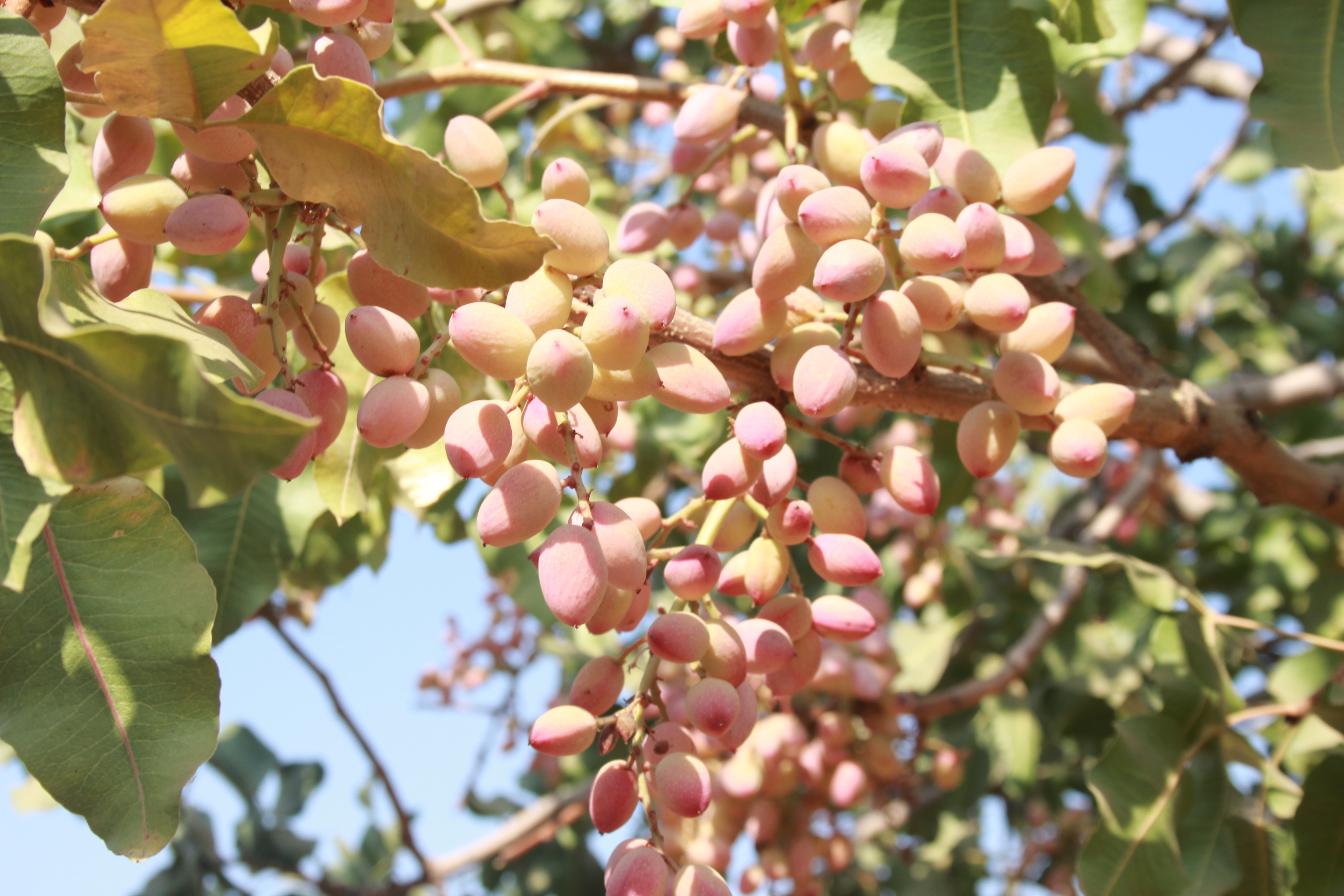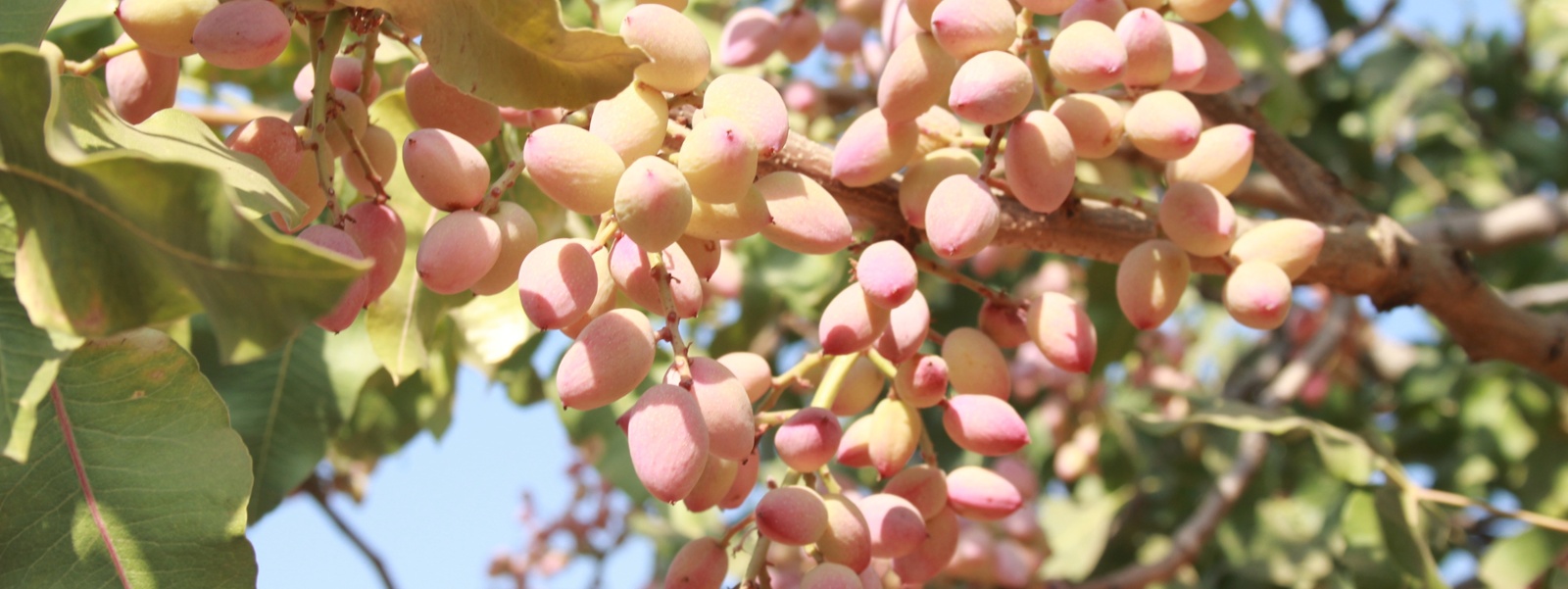Pistachio growers brace for coming production surge

pistachio file photo – Photo/Christine Souza

By Ching Lee
After harvesting a record crop this year, California pistachio growers say they’re looking to processors to expand use of the nut and drive up sales as more trees go in the ground and come into production.
Already, some growers voice concern the sector may be growing too fast, with projections that California pistachio acreage will near 811,300 and production will reach 2.08 billion pounds by 2031.
“I’m afraid of oversupply and under demand because of all the acres that have been planted,” Fresno County grower Greg Meyers said.
With the almond market “in such disarray,” Meyers, himself an almond grower, said farmers are looking for other crops to grow, and they’re “planting pistachios like nobody’s business.” He said he fears the pistachio sector may be heading in a similar direction as almonds, with “everybody wanting a piece of the action.”
Alarm bells come as a new study commissioned by American Pistachio Growers estimates state bearing acreage is expected to increase at a rate of more than 5% a year. That means some 668,850 acres will be in production by 2031.
Current acreage stands at nearly 583,400—nearly five times what it was 20 years ago. There are some 453,750 acres in production, which have more than doubled in the past decade at a growth of more than 9% annually. Pistachio trees are considered “bearing” in their sixth year, when measurable production begins.
As of Oct. 20, APG estimates the California pistachio crop at 1.48 billion pounds, up from an earlier estimate of 1.35 billion pounds. APG President Richard Matoian said he thinks the crop may be closer to 1.5 billion pounds after a more complete count. The previous record was set in 2021, with about 1.16 billion pounds.
Pistachio trees are alternate bearing, with higher yields during “on” years followed by lower yields during “off” years. 2023 represents an “on” year, though growers agree favorable growing conditions further helped production, with plentiful rain, chill hours, a cool spring and mild summer temperatures.
“I think this is one year that we like to put in the record book, because it was amazing,” Madera County grower Chris Wylie said.
In addition to their family operation, Chris Wylie and his brother Craig also do custom farming for other landowners. They described their own crop as the heaviest they’ve ever produced, with yields topping 4,000 pounds per acre. In some orchards they manage, they noted yields as high as 7,000 pounds per acre on the Golden Hills variety, which the Wylies said was unheard of a few years ago.
While some almond growers have reported “horror stories” of navel orangeworm damage—also a pest of concern in pistachios—Matoian said pistachio orchards have not seen the same level of damage, with most orchards producing a quality crop.
“Normally, when we see high damage in almonds, we tend to see it in pistachios,” he said. Matoian said he thinks the healthier economics of pistachios may have allowed growers to “put in the extra time, effort, work and cost” to do proper orchard sanitation to ensure low worm damage.
Some growers say hull integrity this season may be another reason they avoided heavy worm damage, as split hulls allow an entryway for the pest.
With such a heavy crop, Chris Wylie said he’s disappointed grower prices have dropped to around $1.55 a pound, when past earnings have been more than $2 a pound. He said he’s hoping prices will move closer to $1.80 to $1.90.
Even with the lower price, the brothers agree most growers whose orchards produced more than 3,000 pounds per acre should be able to make a profit.
With carryover inventory at about 163 million pounds—the lowest in three years—Matoian said the bigger crop comes after three consecutive years of record shipments.
“Demand has been strong, and barring some unforeseen issues like a tariff, the market still looks to be pretty robust,” he said.
Elizabeth Keenan, sales and marketing manager for Keenan Farms, a grower, processor and shipper in Kings County, said she’s excited about the record crop, considering production last year was smaller than anticipated.
“We had tons of demand and not a lot of supplies for everyone, so it was a lot of turning people away and saying, ‘Hang tight, wait until the next crop year,’ and this year sure delivered,” she said.
Keenan acknowledged that as more acreage comes online and harvests grow bigger, there are new challenges, with the industry needing to find new customers and new ways to market pistachios. That may entail creation of new pistachio products.
Matoian said the projected surge in California acreage presents opportunities for growth, but he said the industry needs to start implementing bigger and better marketing programs to increase demand for the nut.
“That’s been our mantra: Build consumer demand ahead of the anticipated production,” he said.
One emphasis has been development of export markets, which already take 70% of the crop. Asia remains a very strong market, Matoian noted, with increased shipments going to India, Vietnam and China, even as Chinese retaliatory tariffs remain. Keenan said handlers also have been pursuing Mexico and Saudi Arabia.
The U.S. remains the world’s top pistachio producer, with about 50% of total world production. It competes with Iran and Turkey, the second and third largest producer, respectively. The Iranian crop this year is larger than the past two years, Matoian noted, though production in Turkey is down.
Grower Meyers said he thinks processors may be focusing too much on exports and should try to sell more nuts here at home. He noted “the world is in turmoil,” and other currencies are weaker than the dollar, making U.S. products more expensive.
Grower Craig Wylie agrees.
“Look at the world climate right now: wars and famines,” he said. “They’re not going to have the money to be buying a snack nut. We better expand our domestic market instead.”
After removing 500 acres of almonds this year, Meyers said he is in no rush to plant more pistachios, considering the acreage outlook for the crop. Chris Wylie voiced similar sentiments, noting he has 50 acres on which he will plant neither pistachios nor almonds. He said he plans to use the land as a water bank for his other trees.
As a consultant, Wylie said he used to recommend planting pistachios, but not right now “because of the overplanting.” With production costs soaring and more acreage coming into production, he said if prices drop below $1.25 a pound, “it takes away the profit.”
It took 30 years for pistachio growers to reach 1 billion pounds of production, Matoian said, and now they’re poised to hit 2 billion pounds by 2031. With such rapid growth, “growers have to be mindful that additional acres planted could have an impact on grower returns,” he added.
Marketer Keenan said what made the pistachio sector successful during the past 50-plus years is “slow, steady, conscious growth”—a strategy that should continue today to keep supply and demand in balance.
(Ching Lee is an assistant editor of Ag Alert. She may be contacted at clee@cfbf.com.)




